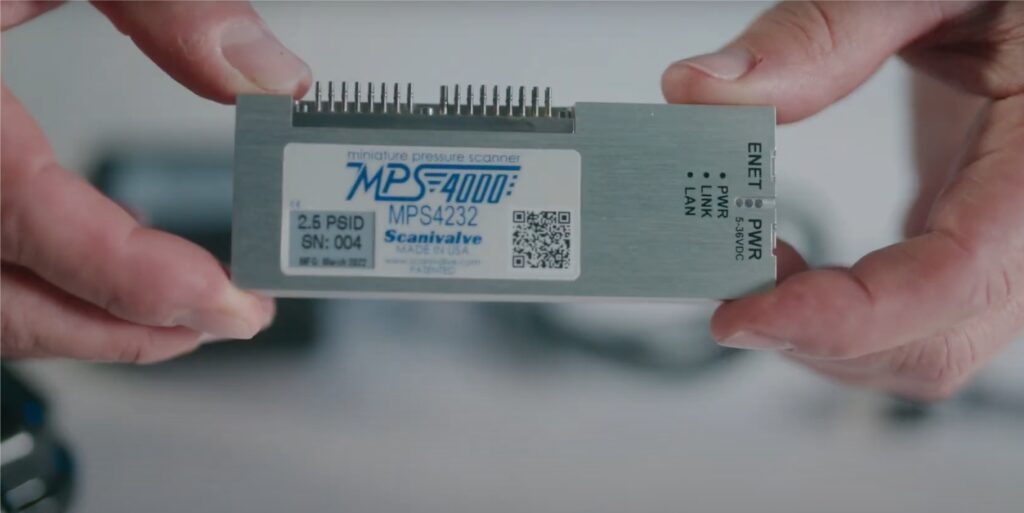Evolution Measurement has unveiled a new miniature pressure scanner from Scanivalve, the MPS4232, which has been developed for wind tunnel testing and flight test applications. Along with its beneficial size, accuracy, speed and functionality, the new scanner has 32 discrete pressure channels, TCP/IP Ethernet connectivity, an A/D per channel and synchronous scanning.
The MPS4232 electronics are designed around a high-performance dual-core processor which can produce engineering unit data for 32 pressure channels at once at rates in excess of 1,000Hz (samples per channel per second). Onboard flash memory stores the pressure-temperature matrix that enables the conversion of RAW 24-bit A/D counts to precise engineering unit data over a wide operating temperature (0-70°C).
Using the legacy ZOC22b as a starting point, the MPS4232 has numerous features that are said to make it superior to the legacy ZOC-style scanners – including built-in electronics with a dual-core processor, one 24-bit A/D per transducer, Ethernet connectivity, and removable input headers. Furthermore, it is also designed to be easy to use and integrate into an existing system. The integrated web server facilitates configuration and operation of the unit(s) from any device on the network.
Paul Crowhurst, MD at Evolution Measurement, said, “The MPS 4232 is an exciting development in Scanivalve’s miniature pressure scanner range. It offers greater accuracy, synchronous measurement reading from each sensor and features the dynamic zero capability, which effectively zero offsets every measurement. This pressure scanner is ideal for wind tunnel testing environments and flight-testing applications.”


